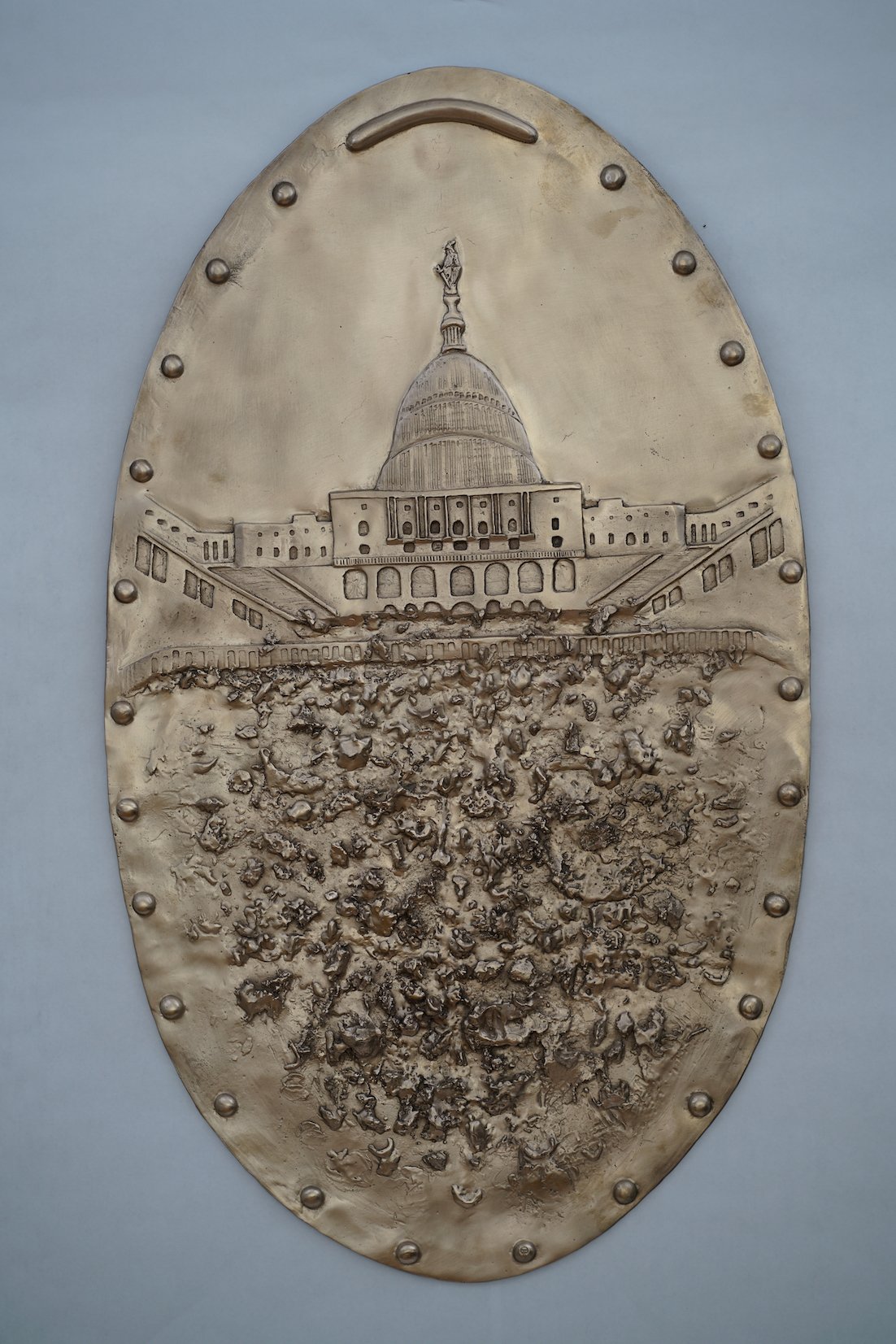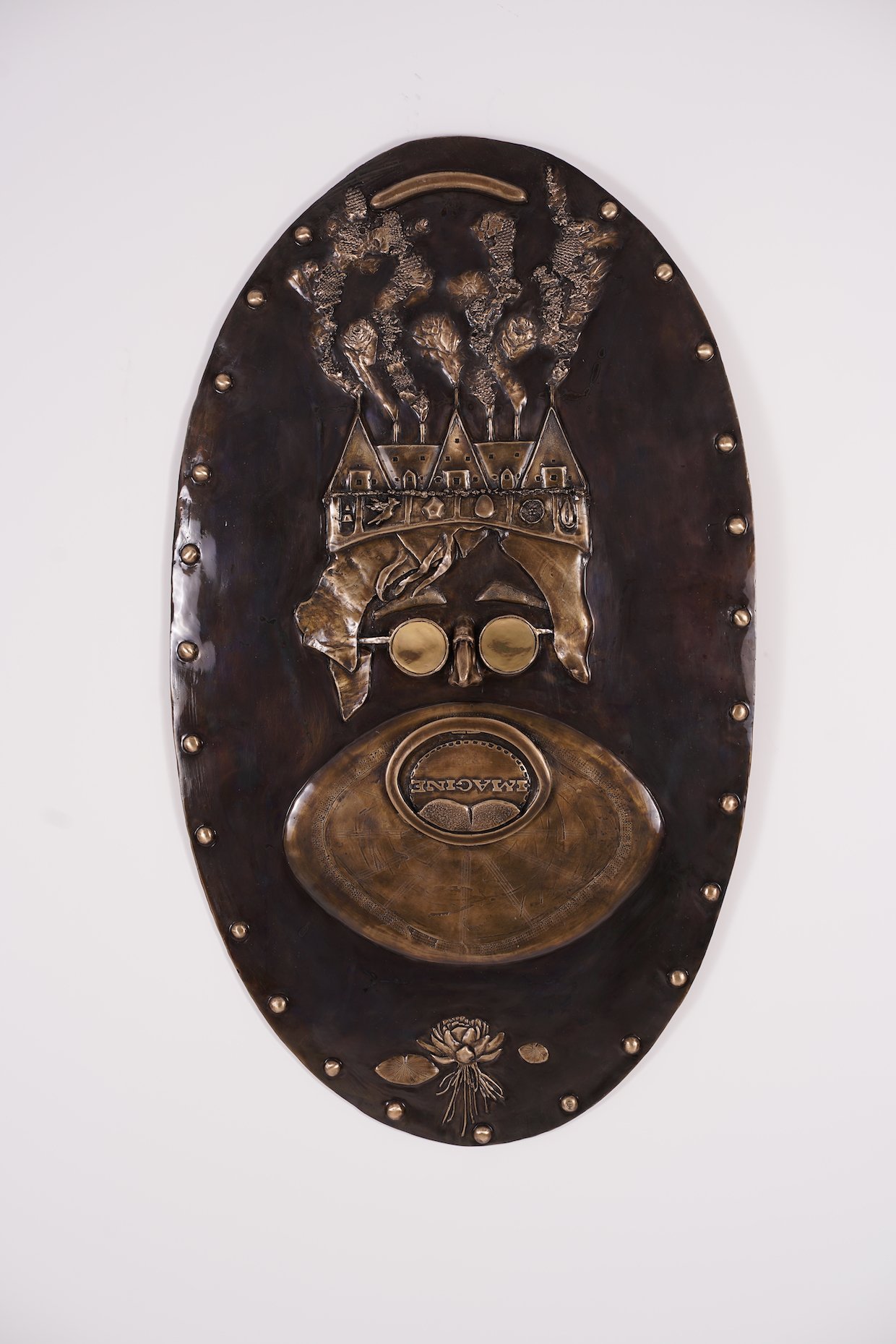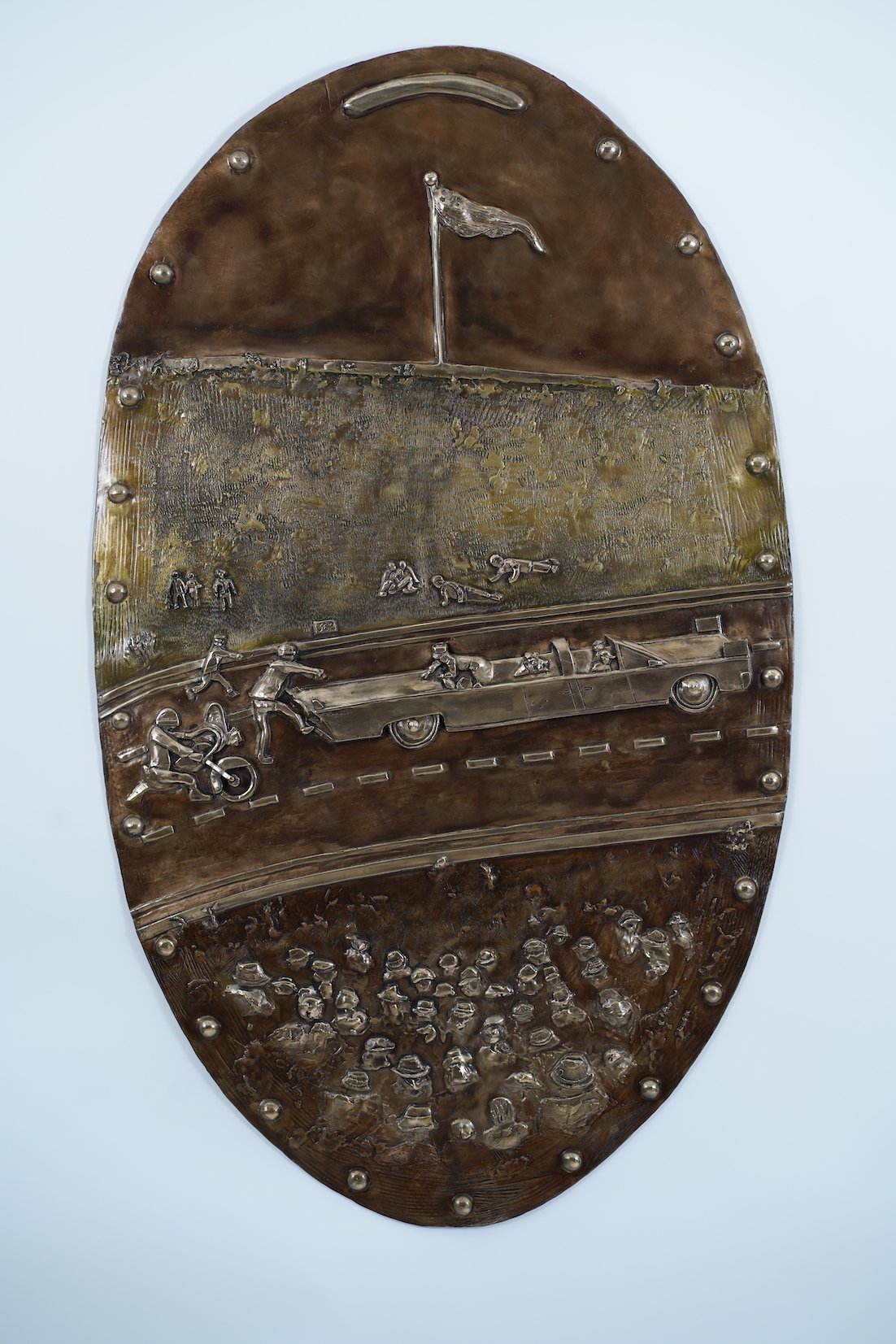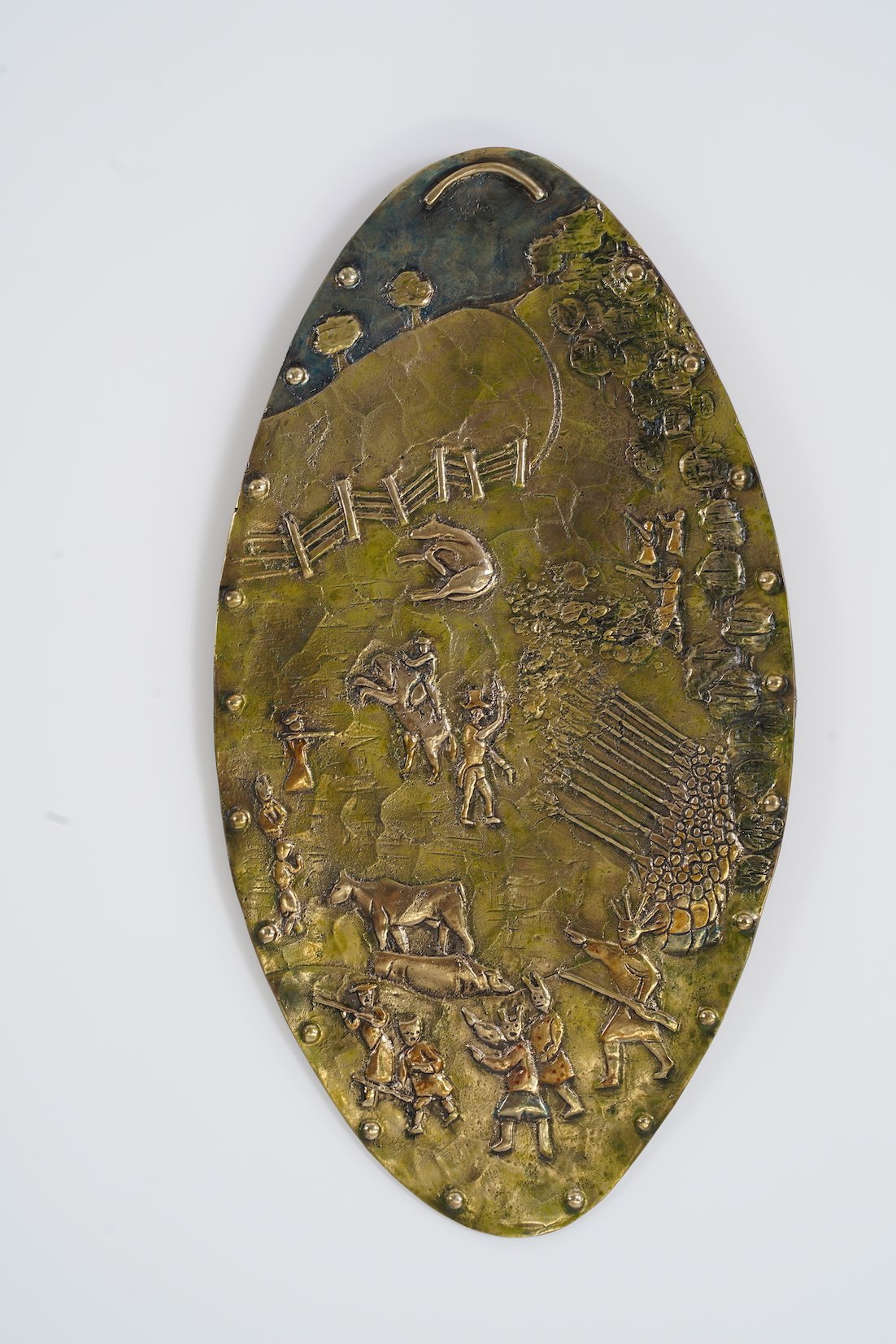Elongated Histories









This sculptural series conjures the flattened pennies sold at amusement parks and national attractions across the United States. Depicting tragic moments in U.S. history in unusual and unexpected forms, the hanging sculptures posit a series of provocations around the question, “What is America really about?”
“Anti-Rent War,” from 2022, depicts a tenants’ revolt in upstate New York, near the artist’s metalworking studio in Sullivan County. Anti-Renters, long oppressed by the feudal lease system that dominated the area, registered their demand for land reform by resisting taxation and eviction—and committing violence—in disguise as “Calico Indians.” The appropriative costumes gesture at conflicts within working-class and labor movements predicated on the continued Indigenous dispossession from their land. At the conclusion of the war, feudal tenures were, indeed, banned. (See, for example, the studies by historians Reeve Huston, Henry Christman, David Maldwyn Ellis, and Charles W. McCurdy).
Cultural nostalgia for the 1960s and ’70s, both a political Renaissance and the beginning of the end of progressivism in America, appear through two sculptures reminiscent of John Lennon’s political music, “Imagine Peace” and “Cut Flowers.” While the former features Lennon himself, the latter shows his humble memorial in Strawberry Fields, Central Park, littered with flowers and tokens left by living mourners. The scissors hint at Yoko’s grief and output with reference to Cut Piece (1964), while the flowers also announce the end of the so-called flower generation. “Strange Love” and “Dark November” perform a similar dualistic move around the Kennedys: the first hints at the Cuban Missile Crisis, a key turning point in the Cold War in whose political aftermath we still live today, while the second portrays the President’s murder in a long, elegant car.
More recent events appear in the series as well. “Ground Zero” depicts a map of Manhattan with two dots to mark the site of the tragedy on September 11th, 2001. In “Descent/January 6, 2022,” insurrectionists appear before the capital in a gnarled maw, conjuring disorder and chaos. By hopeful contrast, “Freedom” shows the demolition of statues celebrating America’s history of racist violence.
The series invites viewers to consider what moments in history we tokenize; as we collectively construct a national narrative by concretizing tradition in objects and memorials, these sculptures at once cheapen the act of memorialization by reducing pivotal historical moments to penny-worth souvenirs and democratize our history by making these moments available for questioning in the everyday. What moments in history might you put on a penny, had you the chance?